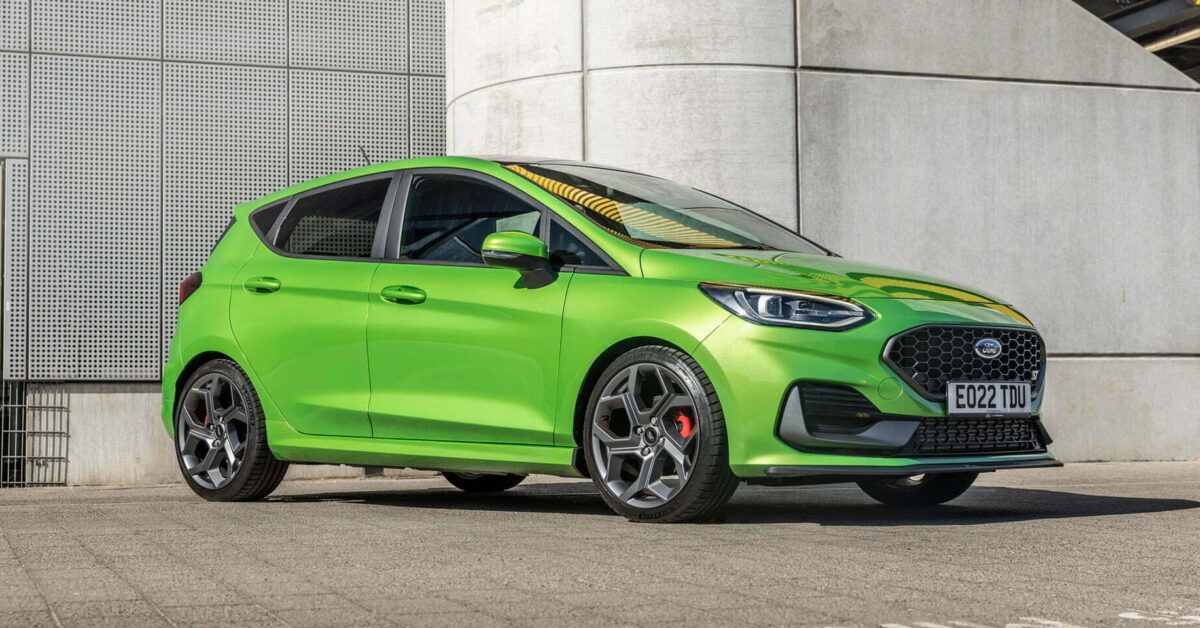Using data sourced from the largest fleets in the UK and considering the standard three-year lease period, the following models represent the best approved-used cars available through typical franchised or main dealers.
The Most Reliable list is compiled based on unplanned days vehicles spend off the road, with punctures excluded. As a result, the rankings reflect more than just the reliability of the cars—they also take into account the efficiency and effectiveness of the dealer networks in handling repairs when issues do arise.
According to the rankings for the most reliable fleet cars over a three-year period, the BMW 3 Series holds the top spot, followed by the Toyota Corolla, Hyundai Tucson, Audi A4, and Kia Sportage. Tesla’s Model 3, which ranked second previously, now sits in sixth place, while the Honda Civic, Audi A3, Volvo XC40, and Toyota C-HR round out the top ten.
For 2023, Toyota surpassed BMW to claim the number one position. With Toyota’s forward-looking 10-year warranty scheme factored in, the brand remains our top recommendation for those buying a second-hand car for the first time and simply looking for dependable transportation.
Toyota Auris
The editor’s top pick is a used Toyota Auris. Described as “one to buy and keep forever if you want an easy life,” the Auris is a British-built car that is known for its reliability and practicality.
It comes with either petrol or hybrid engines, the latter capable of achieving fuel economy in the 70mpg range when driven gently. This makes it a popular choice among taxi drivers.
Are you the kind of person who gets fed up reading motoring journalists banging on about a car’s character? The kind of person who thinks that’s all rubbish and is frankly interested only in finding a used car that will get you around dependably and quietly, with the minimum of hassle and the maximum of ease? If so, there’s a strong chance the Toyota Auris will be right up your street.
Toyota’s family cars have never been renowned for their ability to stir the soul or tingle the spine. But they are well known – and loved by millions of buyers – for their ability to provide unobtrusive, reliable transport with minimal fuss. This second-generation Auris was no different.
The Toyota Auris is a dependable and hassle-free used family car that won’t cost the Earth to buy or run. It has a good reliability record and features a punchy and smooth 1.2 turbo engine. However, it’s also uninspiring to drive, not particularly spacious, and the hybrid version isn’t cheap.
A range of engine options were offered throughout the Auris’s production. Early models gave buyers the choice between two petrol engines – a 1.3-litre and a 1.6-litre – alongside a 1.4-litre diesel and a 1.8-litre petrol-electric hybrid.
In 2015, a facelift introduced a 1.2-litre turbo petrol and a 1.6-litre diesel. By the end of 2017, the lineup was narrowed down to just the 1.2 turbo and the hybrid variant.
At launch, the Auris range began with the Active trim level, which included climate control. The next step up was the more popular Icon trim, adding a touchscreen infotainment system with digital radio and Bluetooth.
At the top of the range was Excel, which came equipped with dual-zone climate control, automatic headlights and wipers, heated front seats, and keyless entry and start.
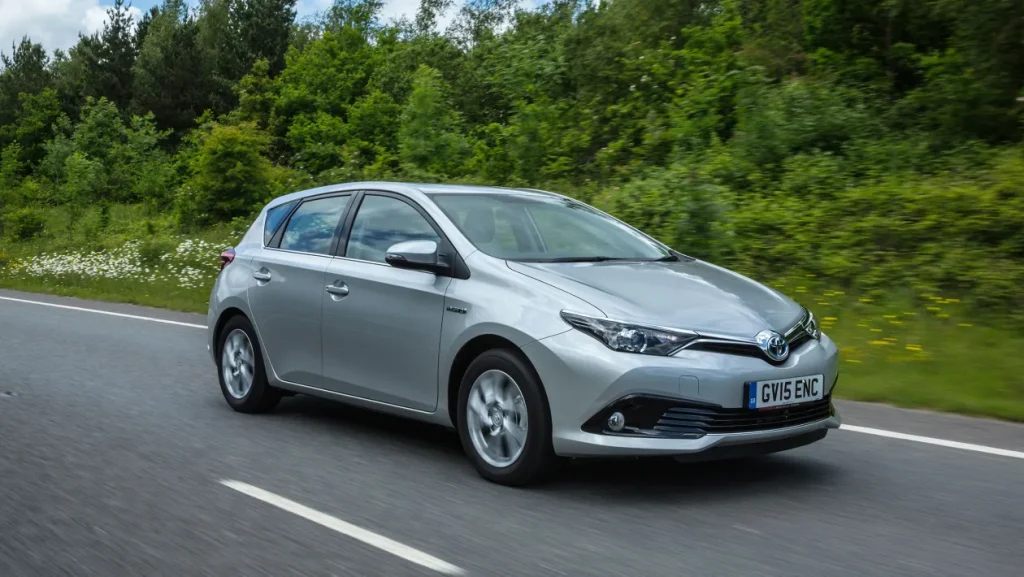
Over the years, Toyota introduced several other variants and special editions, such as Icon Tech, Icon Plus, Design, and Business Edition. These versions mostly sat around the mid-range level and varied in equipment and features.
Driving characteristics in the Auris depend heavily on which version you choose. The 1.3 petrol and 1.4 diesel models were fitted with a simpler suspension setup that resulted in a rougher ride and cruder handling. These two engines also lacked sufficient power, making them easy to place on the “avoid” list.
On the other hand, the two larger petrol engines and the 1.6 diesel provided a smoother ride. While even these could be unsettled by sharper bumps, they offered safe and predictable handling.
However, push the Auris into a corner and you’ll quickly find that it leans heavily and understeers with little provocation — not exactly a recipe for driving excitement. That said, they’re quick enough for the average driver, and the 1.2 turbo stands out as a highlight for being both responsive and refined.
The hybrid model behaves similarly to the higher-end petrols and diesels when it comes to ride and handling, but it delivers power in a noticeably different way.
The electric motor delivers strong initial acceleration off the line, but once at higher speeds, it begins to feel sluggish. Request moderate acceleration and you’ll be greeted by the petrol engine revving loudly and without much urgency.
Inside, the Auris isn’t boring to look at, but the quality of materials used lets it down. The plastics feel cheap, and the infotainment system seems outdated by modern standards. However, the layout is intuitive, with all controls and buttons placed where you’d expect, which makes the cabin easy to get comfortable with.
Boot space in the Auris is adequate, but if space is a priority, competitors such as the Volkswagen Golf and Nissan Pulsar offer more. The Skoda Octavia, in particular, leaves the Auris far behind in this regard.
The one practical advantage the Auris does offer is an adjustable boot floor, included as standard across all trims. This feature helps simplify loading and allows for a flat load bay when the rear seats are folded down.
The same general theme applies to passenger space. Whether you’re sitting in the front or the back, it’s acceptable, but it doesn’t match what you’ll find in the top performers in this class. In fact, that’s a fair summary of the Auris as a whole – inoffensive, but hardly outstanding.
Although the cost of repairs can be on the higher side, there’s no denying that the Auris is one of the most dependable cars on the market.
Among its advantages are its well-proven hybrid technology, smooth and refined driving experience, and user-friendly, spacious design. However, some downsides include its relatively high repair costs and uninspiring driving dynamics, with some describing it as “dull as ditchwater to drive.”
Also Read: Top 10 Vehicles With Storage Bins That Are Great for First Aid Kits
Hyundai i20
Another strong contender on the list is the Hyundai i20. While it may not be the most exciting vehicle, it is certainly a capable and reliable one.
Korean automakers, much like their Japanese counterparts, are gaining a solid reputation for producing dependable cars, and the i20 exemplifies this trend. It’s a supermini that can be purchased for under £2,000 and is praised for its robust reliability and low-cost, fuel-efficient engines.
The long warranty offered on Hyundai vehicles often leads to better upkeep, and the i20 provides generous space in both the front and rear. On the downside, parts can be expensive, and the overall appeal of the car leans more toward the rational than the emotional.
The 2024 Hyundai i20 facelift arrives at a time when small cars, like Marvel movies, aren’t the cultural juggernauts they once were — but there’s still a sizable audience that appreciates them.
Hyundai has acknowledged this by giving its second-smallest model a mid-life update, though the changes are mostly subtle. Visually, the refreshed i20 features minor tweaks such as a revised front end and new alloy wheels, while the cabin remains largely unchanged, with the same layout and materials as before.
The most notable — and arguably puzzling — change lies under the hood. In an era where electrification is gaining momentum, Hyundai has dropped the mild-hybrid tech from its 1.0-litre turbocharged petrol engine. The i20 now comes with a single engine option: a 99bhp three-cylinder unit (1.0 T-GDi 100PS).

While this engine is punchy enough above 3,000rpm and gets the car from 0–62mph in 10.4 seconds (with the manual gearbox), it feels a bit flat at lower revs.
he automatic version is even slower, taking 11.4 seconds to reach 62mph. It’s worth noting that the sportier 118bhp engine from the older N Line model is gone, replaced by an N Line S variant with the same 99bhp as the standard version.
On the road, the i20 is composed and agile, offering grippy handling that makes it capable on twisty roads. However, it doesn’t quite match the driving engagement of rivals like the Seat Ibiza.
The steering also feels vague around the center, which dulls the sense of connection to the road. Ride quality is firm, particularly around town, but it smooths out at higher speeds. It’s more stable than softer alternatives like the Citroën C3, but not as cushy as the Peugeot 208 or VW Polo.
Inside, the i20 remains practical with decent rear seat space and good standard equipment, particularly in the mid-spec Premium trim, which is the best value in the lineup.
However, the interior design and materials leave something to be desired. It feels dark and somewhat cheap, especially when compared to the Audi A1 or Renault Clio. Speaking of which, the Clio also edges ahead in terms of boot space and overall polish.
In the end, the Hyundai i20 continues to be a solid all-rounder — well-equipped, reasonably efficient, and expected to retain its value well. But it doesn’t truly excel in any specific area.
With stiff competition offering more flair, comfort, or practicality, the i20’s decision to ditch mild-hybrid technology feels like a step backward. It remains a sensible choice, just not a standout one.
Toyota Aygo Mk1
The Toyota Aygo Mk1 is a tiny tearaway that’s excellent fun to drive and stands out as one of the cheapest reliable used cars on the market. Toyota’s compact city car is a solid option if you’re after inexpensive, dependable motoring and don’t require much interior space.
Like the closely related Peugeot 107, the Aygo impresses with very low average repair costs, and it also benefits from cheap insurance and affordable running costs.
True to Toyota’s reputation, it delivers strong reliability, backed by excellent dealer and warranty support. It’s inexpensive to own and enjoyable to drive, though it does come with compromises such as a small boot and rear seats. Additionally, the Aygo can feel somewhat out of its depth on the motorway.
The Toyota Aygo Mk1 made its debut in July 2005 and was offered in standard, Aygo+ and Sport+ trims. It came equipped with a 67bhp 1.0-litre three-cylinder petrol engine, and buyers could choose between three or five-door hatchback versions. Just six months after its launch, a short-lived 1.4-litre diesel engine was introduced.
Over the years, Toyota also released several special editions such as the Fire, Ice, and Platinum. In January 2009, higher-spec Blue and Black versions were introduced when CO₂ emissions were reduced to 106g/km.
A facelift in March 2012 brought further improvements, dropping emissions to 99g/km and adding an upgraded interior and additional equipment, along with a new front-end design. A final update followed in August 2013, which included new trim levels and standard Electronic Stability Programme (ESP).
When considering which model to buy, it’s important to note that very few Aygos came with ESP, and there was a period when Toyota even removed it from the options list. Many Aygos also lack air-conditioning, although having it is beneficial, especially during the summer months when the cabin tends to get quite hot.
Finding an Aygo diesel will be difficult, and the MMT automatic version is also rare. While some owners aren’t fond of the MMT gearbox, it can perform well if you’re willing to get used to it. Nevertheless, the most common and suitable combination for most buyers is the petrol engine paired with a manual transmission.
Entry-level Aygo models are lightly equipped, so it’s worthwhile to look for a higher-spec Aygo+ model. Alternatively, the Blue and Black editions offer more comfort-focused features, including air-conditioning and alloy wheels.
As for alternatives, the original Kia Picanto, produced from 2004 to 2011, was a solid choice. However, the second-generation version introduced in 2011 is a noticeable improvement.
It offers good equipment, a lengthy warranty, and the feel of a larger car. Another strong alternative is the Hyundai i10, which is based on the same platform as the Picanto. The original Ford Ka (1996–2008) stands out for being fun to drive, but it’s prone to rust.
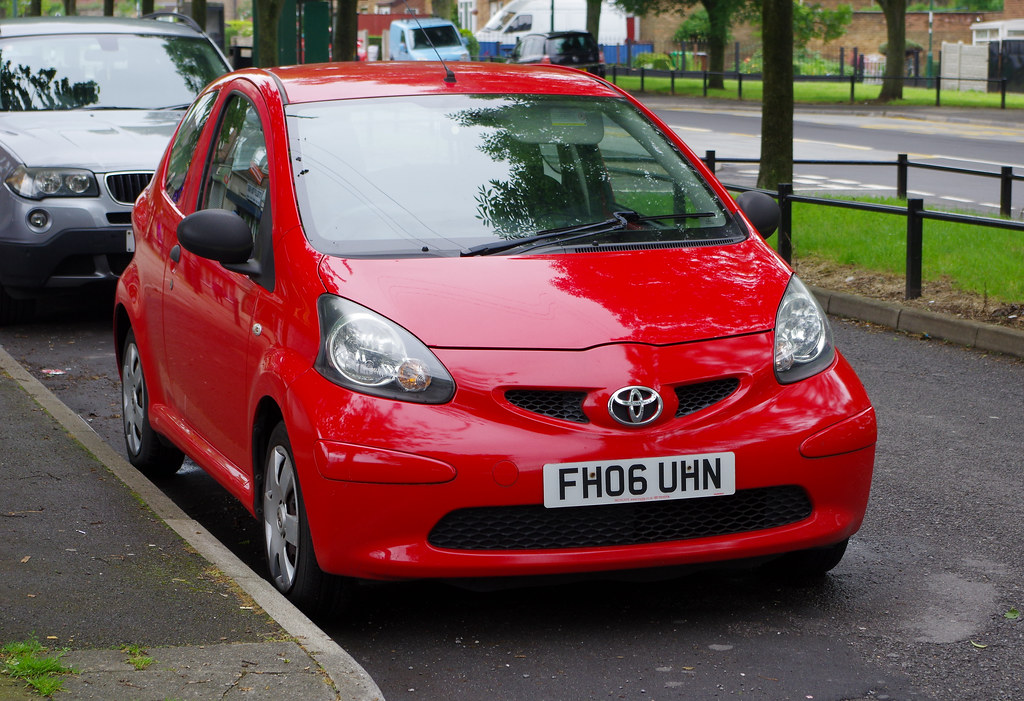
The Mk2 version, which arrived in 2008, isn’t as enjoyable or charming but does benefit from sharing many parts with the Fiat 500 and tends to be in better overall condition. The Fiat Panda is also worth considering, thanks to its low running costs, commendable refinement, and surprisingly roomy interior.
When inspecting a used Aygo, there are a few common issues to watch for. Water pumps on both the 1.0-litre petrol and 1.4-litre turbodiesel engines can leak or fail, so it’s important to check for any signs of coolant leakage.
Tailgate seals are another potential problem, as misaligned seals can allow rainwater to enter the boot. Water ingress can also occur through the rear light seals.
The exhaust system, particularly the back box, may not be very durable, with some units deteriorating in just over two years—listen for any signs of blowing. Rear brake cylinders are also prone to leaking after only a couple of years; check for fluid on the brake back plate and monitor the brake fluid level closely.
Inside, the Aygo may feature a minimalist layout, but the interior is quirky and stylish. Despite its compact size, it offers a surprising amount of passenger space, although it only seats four people. However, the emphasis on cabin room does reduce boot space, which is limited to 139 litres. With the rear seats folded, this expands to 751 litres, offering better practicality.
Running costs for the Aygo are reasonable. All models require servicing every 12 months or 10,000 miles, with Toyota offering fixed-price servicing at franchised dealerships.
There are three service tiers—Minor, Full, and Full+—priced at £99, £179, and £245 respectively, inclusive of parts, labour, and VAT. The petrol engine doesn’t have a cambelt, so there’s no replacement needed there, but the brake fluid should be changed every two years at a cost of £40.
Coolant replacement is due every 10 years or 100,000 miles and typically costs around £60. While there’s no official maintenance schedule for air-conditioning systems, Toyota recommends regassing them every two to three years at a cost of £79. If the vehicle is under 10 years old and has fewer than 100,000 miles, Toyota offers a one-year warranty when the car is serviced at an authorized main dealer.
Peugeot 107
The Peugeot 107 is described as “like an Aygo, but dealers make a difference.” It’s one of Peugeot’s most reliable used vehicles and has become a favorite among learner drivers. Its low repair bills, modest running costs, and inexpensive insurance make it an attractive option.
Mechanically, it’s nearly identical to the Toyota Aygo, but where the Aygo gains an edge is in the strong customer support Toyota offered when the car first hit the road. As these models now fall into the bargain-basement section of the second-hand market, you should base your decision on the individual example available to you.
If you’re unable to find a decent Aygo locally, the 107 remains a sound alternative. It earns high marks for a small French hatchback, is potentially the perfect first used car, and offers a fun, frugal driving experience. However, in practice, it’s more of a two-seater due to limited space, and it scores lower overall compared to the Aygo.
If the Peugeot 107 seems to resemble the current Citroën C1 and Toyota Aygo, you’re not imagining things — all three models were built on the same chassis and developed in partnership.
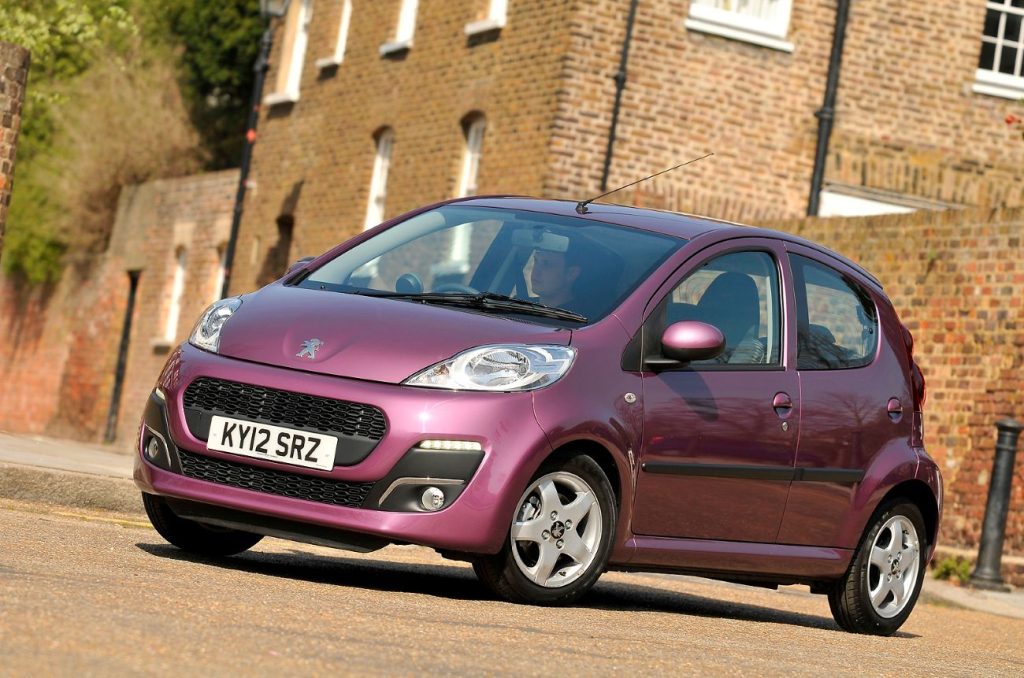
Each brand contributed its own design flourishes near the end of the development process, resulting in slight visual differences. As a result, choosing between them largely comes down to individual preferences in styling, pricing differences, and the dealership experience you prefer.
Thanks to their compact size and small-displacement engines, these three vehicles represent a practical option for buyers in search of a nimble city car.
However, notable alternatives include the Volkswagen up!, SEAT Mii, and Skoda Citigo, which similarly share a platform. These competitors offer a more modern design, better-quality interiors, and competitive pricing, making it difficult to recommend the ageing Peugeot over any of them.
With the Peugeot 107 being phased out and replaced by the newer Peugeot 108, it’s no longer easy to justify purchasing one at full retail price. That said, buyers can expect attractive discounts as dealers clear out remaining 107 inventory.
The Peugeot 107 does have its drawbacks. Boot space is quite limited, and the cabin becomes noticeably noisy at motorway speeds.
However, the biggest red flag for some buyers will be its three-star Euro NCAP safety rating. This lower score is due to the Peugeot 107 — along with its sister models — falling behind more recent safety advancements and industry standards.
Also Read: 10 Safe and Affordable Cars in 2025 That Earned IIHS Top Safety Pick Plus Ratings
Used Suzuki Alto
The Suzuki Alto is another pint-sized contender that’s hard to ignore. Although it’s been off the new car market since 2014, the Alto’s reputation for reliability hasn’t diminished. It’s an excellent example of a cheerful, ultra-affordable car that’s also a lot of fun behind the wheel.
Today, it’s one of the most dependable used cars available for less than £2,000 — a fact that makes it worth serious consideration. As noted, it’s “cheaper than walking” and unexpectedly entertaining to drive. That said, it’s not well-suited to motorway travel and is beginning to show its age.
The Suzuki Alto is a small city car that was sold in the UK until 2014, designed primarily for drivers looking for a budget-friendly, simple, and economical vehicle.
Developed in collaboration with Nissan — sharing many parts with the Nissan Pixo — the Alto was marketed as a no-frills, affordable option for urban commuting. It was positioned against rivals such as the Toyota Aygo, Peugeot 107, Citroën C1, Kia Picanto, and Hyundai i10, making it part of a highly competitive city car segment.
One of the key reasons to consider a used Suzuki Alto is its extremely low running costs. The car is impressively fuel-efficient, averaging around 60 mpg, and many models registered before 2017 are eligible for £0 road tax. Insurance is also very affordable, often falling into group 4 or lower, making the Alto an appealing choice for young or first-time drivers.

Thanks to its small size, the Alto excels in congested city environments and tight parking spots. While it lacks high-end features, its simplicity means fewer things are likely to go wrong, and many buyers appreciate its stripped-back approach. Suzuki’s reputation for reliability carries over to the Alto, with most models proving durable and easy to maintain.
From 2009 to 2014, the Suzuki Alto was available in several basic trim levels. The SZ model was the entry-level option and typically came without central locking or electric windows.
Stepping up the range, trims such as SZ2, SZ3, and SZ4 added features like air conditioning, body-coloured bumpers, and, in some cases, alloy wheels and fog lights. Regardless of trim, all Altos were powered by a 1.0-litre, three-cylinder petrol engine delivering 67 bhp, paired with a five-speed manual gearbox.
A few automatic versions were also sold, though these are rare and tend to feel sluggish. Acceleration is modest, with 0–62 mph taking around 13.5 seconds — not fast by any means, but more than adequate for city driving.
Despite its reliability, there are a few issues to be mindful of when considering a used Alto. Rust can be a concern, particularly around the wheel arches, sills, and underbody, so thorough inspection is important. The interior, made from hard-wearing but cheap materials, may show signs of wear or develop rattles over time.
The three-cylinder engine, while efficient, is not particularly refined and can sound harsh, especially at higher speeds. Trim quality is basic throughout, so don’t expect much in terms of comfort or luxury.
When it comes to running costs, the Alto remains a strong performer. Most owners can expect realistic fuel economy between 55 and 65 mpg. Road tax is minimal, with many examples qualifying for either free or £20-per-year tax depending on CO₂ emissions.
Insurance premiums are among the lowest in the market, which is great news for younger drivers. Routine servicing is inexpensive, and parts are widely available, with basic annual maintenance typically costing under £200. Overall, the Suzuki Alto is a sensible and dependable choice for anyone seeking straightforward, cost-effective motoring in the UK.
Used Cars That Are Hard To Purchase
Purchasing a used vehicle can save you a lot of money – if you pick the right model. Unfortunately, not every car on the second-hand market is a smart investment.
Some models have developed a reputation for persistent reliability issues that can leave drivers stranded or footing substantial repair bills.
To help steer you clear of those pitfalls, here’s a list of seven of the worst used vehicles, each known for chronic mechanical problems and high maintenance costs.
Chrysler 200 (2011–2014)
The Chrysler 200 might give the impression of being stylish and budget-friendly, but don’t be fooled—it’s often a financial trap. Common issues include transmission failures, persistent electrical problems, and poor performance in cold weather.
Many Canadian owners have reported that the vehicle’s transmission tends to fail prematurely, with repair costs that can skyrocket, particularly in colder climates where mechanical stress is amplified.
On top of that, widespread electrical malfunctions plague this model, impacting features ranging from infotainment systems to essential components like power windows.
The 2017 Chrysler 200 received a few notable updates, including a new Dark Appearance Package for the 200 Touring models. This package features 18-inch Jet Black Gloss wheels, halogen headlamps with black molding, and a gloss black exterior finish.
Meanwhile, the 200S model is now available with an Alloy Edition Package, which pairs a sport-tuned suspension with a sport mode all-wheel drive system. The 200S Alloy Edition comes in Dark Bronze and Titanium exterior colors, adding a refined visual edge to its performance-oriented design.
Positioned as a near-premium midsize sedan, the Chrysler 200 is the smallest vehicle in Chrysler’s lineup, sitting beneath the larger 300 sedan and the Pacifica minivan.
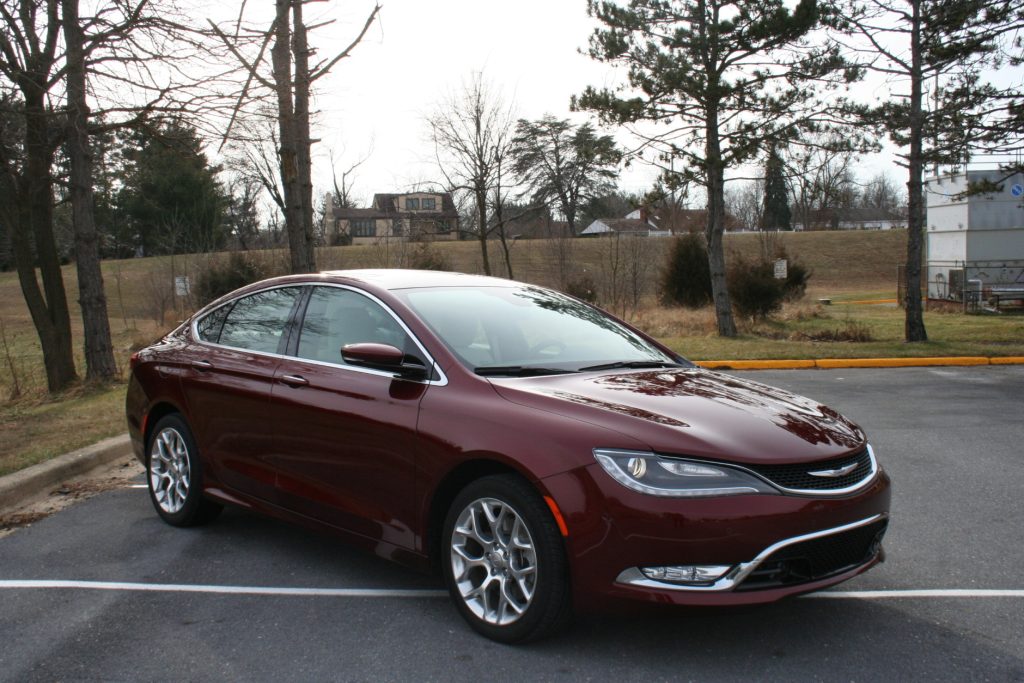
For the 2017 model year, the 200 is offered in five trim levels: LX, Touring, Limited Platinum, 200S, and 200C Platinum. As buyers move up the trim ladder from the base LX to the top-tier 200C Platinum, they gain more in terms of features, luxury, and—specifically in the 200S—enhanced sporty driving characteristics.
Under the hood, the 2017 Chrysler 200 offers a choice between two engines. The first is a 2.4-liter Tigershark inline-four producing 184 horsepower and 173 lb-ft of torque.
The second option is a 3.6-liter Pentastar V-6, rated at 295 horsepower and 262 lb-ft of torque. Both engines are paired with a nine-speed automatic transmission. Front-wheel drive comes standard, while all-wheel drive is available exclusively with the V-6 engine.
Fuel economy for the front-wheel-drive four-cylinder models is rated by the EPA at 23 mpg city, 36 mpg highway, and 27 mpg combined. For the V-6 front-wheel-drive variants, those figures drop to 19/31/23 mpg. When equipped with all-wheel drive, the V-6 returns 18 mpg city, 28 mpg highway, and 22 mpg combined.
In terms of safety, the National Highway Traffic Safety Administration (NHTSA) awarded the front-wheel-drive version of the 2017 Chrysler 200 an overall rating of five out of five stars.
It earned five stars for both frontal and side impacts and four stars in the rollover test. The Insurance Institute for Highway Safety (IIHS) has not yet tested the 2017 model, but it did give the structurally identical 2016 version its highest honor of Top Safety Pick+.
Chevrolet Equinox (2010–2013)
The Chevrolet Equinox has long been a favorite among Canadians looking for a practical SUV, but the 2010 to 2013 models come with a series of red flags. Notable problems include excessive oil consumption, timing chain problems, and transmission issues.
These vehicles tend to burn oil at an alarming rate, causing premature wear to internal engine components—especially if oil levels aren’t monitored frequently between scheduled changes.
Add in timing chain failures and recurring transmission troubles, and this version of the Equinox becomes a poor match for drivers clocking high mileage or navigating tough Canadian winters.
For the 2025 model year, Chevrolet’s compact SUV, the Equinox, undergoes a full redesign, adopting a tougher, more rugged appearance that closely resembles a smaller version of the Traverse.

Inside, the cabin experiences a significant transformation, highlighted by a completely overhauled center console and a strikingly bold new dashboard design. This revamped dashboard is framed by two large, circular air vents that add a distinctive visual flair.
At the heart of the interior update are two prominent digital displays. Directly behind the steering wheel sits an 11.0-inch digital gauge cluster, while the center of the dashboard houses an 11.3-inch touchscreen that operates Chevrolet’s Google-based infotainment system, giving the new Equinox a high-tech feel.
Beneath the Equinox’s squared-off hood lies a revised version of the previous generation’s turbocharged 1.5-liter four-cylinder engine. This powerplant is paired with a continuously variable automatic transmission (CVT) in front-wheel-drive models.
For buyers who opt for all-wheel drive, Chevrolet replaces the CVT with a traditional eight-speed automatic transmission, offering a different driving experience based on drivetrain configuration.
Jeep Grand Cherokee (2011–2015)
While the Jeep Grand Cherokee is widely respected for its off-road prowess, models produced from 2011 to 2015 are notorious for reliability issues. The most prominent concerns include TIPM (Total Integrated Power Module) failure, transmission breakdowns, and air suspension problems in cold weather.
The TIPM, a vital electronic control hub, is a known failure point and leads to widespread electrical glitches. Additionally, in colder regions of Canada, the air suspension system often malfunctions, resulting in repair bills that can quickly spiral out of control. For all its rugged appeal, this Grand Cherokee generation can become an expensive burden.

The 2025 Jeep Grand Cherokee combines utility, comfort, and off-road capability in a way few other midsize SUVs can. While it’s comfortable and spacious enough to serve as an excellent everyday vehicle, it also possesses the ruggedness needed to tackle tough terrain.
There are no significant changes for the 2025 model year, as it continues as part of the fifth-generation Grand Cherokee that was introduced in 2022.
The Grand Cherokee is praised for its impressive towing capabilities, a strong list of standard and optional advanced driver aids, and its superior off-road performance compared to most other midsize SUVs.
However, some drawbacks include a confusing button layout and interior materials that look better in pictures than they feel in person. The Jeep Grand Cherokee remains a solid choice for those seeking both a daily driver and an off-road capable vehicle.
BMW 5 Series (2012–2016)
Driving a BMW 5 Series can be a dream—but maintaining one may very well become a nightmare. Common faults include high repair costs, oil leaks and cooling system failures, and issues with electronic systems.

These problems are not uncommon for this generation of the 5 Series and can result in major engine damage if not promptly addressed. In Canada, where labor and parts for European luxury vehicles come at a premium, the cost of ownership can be prohibitively high. This makes the car more of a status symbol with a steep maintenance penalty than a practical long-term option.
Ford Fiesta / Ford Focus (2011–2016)
The Ford Fiesta and Ford Focus are often seen as go-to choices in Canada for affordable, fuel-efficient compact cars. However, models from this period are widely criticized for their problematic PowerShift dual-clutch transmissions. Key issues include PowerShift transmission issues, rough shifting and clutch failures, and recalls for transmission problems.

Owners report jerky performance, delayed gear changes, and clutches that wear out far too early—often continuing to malfunction even after multiple dealership repairs. These repeated transmission troubles have made these cars a gamble for any used buyer seeking reliability over frustration.

